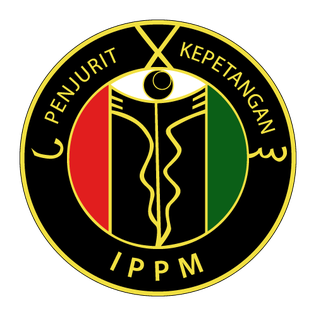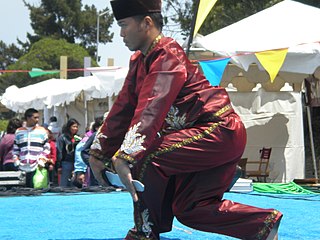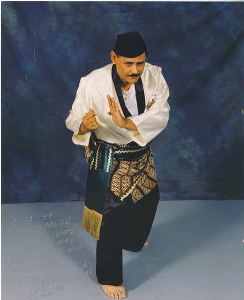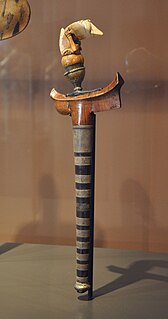 W
WPencak silat is an umbrella term for a class of related Indonesian martial arts. In neighbouring countries, the term usually refers to professional competitive silat. It is a full-body fighting form incorporating strikes, grappling and throwing in addition to weaponry. Every part of the body is used and subject to attack. Pencak silat was practiced not only for physical defense but also for psychological ends.
 W
WSilat is the collective term for a class of indigenous martial arts from the Nusantara and surrounding geocultural areas of Southeast Asia. It is traditionally practised in Brunei, Indonesia, Malaysia, Singapore, Southern Thailand, Southern Philippines and Southern Vietnam. There are hundreds of different styles and schools which tend to focus either on strikes, joint manipulation, weaponry, or some combination thereof.
 W
WSilat Melayu, also known as Seni Persilatan Melayu or simply Silat, is a combative art of self-defence from the Malay world, that employs langkah ('steps') and jurus ('movements') to ward off or to strike assaults, either with or without weapons. Silat traced its origin to the early days of Malay civilisation, and has since developed into a fine tradition of physical and spiritual training that embodies aspects of traditional Malay attire, performing art and adat. The philosophical foundation of modern Malay Silat is largely based on the Islamic spirituality. Its moves and shapes are rooted from the basis of Silat movements called Bunga Silat, and Silat performances are normally accompanied with Malay drum assembles.
 W
WInti Ombak is a style of pencak silat which blends martial arts descended from the Mataram Kingdom of Central Java with those hailing from the island of Madura. In English it is often abbreviated to IOPS, short for "Inti Ombak Pencak Silat". The Inti Ombak Pencak Silat Union is guided by three caretakers in accordance with the Javanese adage "In the front as a leader, in the middle as a moderator, in the back as an advocate". The current caretakers are Ki Poleng Sudamala of Yogyakarta, Daniel Prasetya of Colorado, and Tjahjadi Tanudjaya of Tengerang. The school's international headquarters are located in Yogyakarta, Indonesia while the US headquarters are in Loveland, Colorado.
 W
WIstiadat Pewaris Penjurit-Kepetangan Melayu or formerly known as Ilmu Persilatan Penjurit-Kepetangan Melayu , shortform IPPM is one of the oldest original known to date Malay martial art form or called 'Silat' in existence which has been heritage from one generation to another. Descended from the first ruler of the Malayapura Kingdom, King Adityawarman whom is also known as Seri Maharaja Diraja which to a later stage sparked the start of Minangkabau history in Pagaruyung Kingdom, Sumatra, Indonesia. These story has been greatly narrated in most of old Malay Literature including in of the most reliable sources to date called Sulalatus al-Salatin or better known as The Malay Annals (Malay: Sejarah Melayu). The manuscript begin with the stories of Wan Malini and Wan Empuk whom was presented with 3 adopted princes right after when their rice fields was magically expelling gold. These 3 princes was later mark as the kickstart for the next 3 big empires in Malay Archipelago. Those empires were the Kingdom of Majapahit, The Malacca Sultanate and the Pagaruyung Kingdom around the 12th century.
 W
WKuntao or kuntau is a Hokkien term for the martial arts of the Chinese community of Southeast Asia, specifically the Malay Archipelago. It is most commonly practiced in and associated with Indonesia, Malaysia, the Philippines and Singapore.
 W
WPendekar, pandikar or pandeka in silek is an Indonesian word used to refer to or address a warrior who masters the martial arts, particularly silat. Not all masters carry the honorary title; it must be either officially bestowed by royalty or unofficially by commonfolk. The latter is most common today, especially outside Southeast Asia. In modern usage, the title is often adopted by the founder of a new style and is used much like the term grandmaster.
 W
WPersaudaraan Setia Hati Terate is a sports and pencak silat organization from East Java, Indonesia, created by Ki Hadjar Hardjo Oetomo in 1922 and was later agreed to be renamed to Persaudaraan Setia Hati Terate at its first congress in Madiun in 1948.
 W
WSeni Gayung Fatani is a style of silat from Malaysia based on the art of war, the combination punch & kick striking, joint-locking & grappling techniques, and various type of melee weapon. In Malay, the word seni means art and gayung is a word for martial arts, synonymous with silat. Fatani means wise in Arabic and was chosen in 1976 by the councils of Guru Tua. The first grandmaster of the silat is Tuan Guru Hj Anuar Abd. Wahab. Tuan Guru Aminuddin Haji Anuar is the current Grandmaster of Seni Gayung Fatani Malaysia.
 W
WListed here are the weapons of silat. The most common are the machete, staff, kris, sickle, spear, and kerambit. Because Southeast Asian society was traditionally based around agriculture, many of these weapons were originally farming tools.